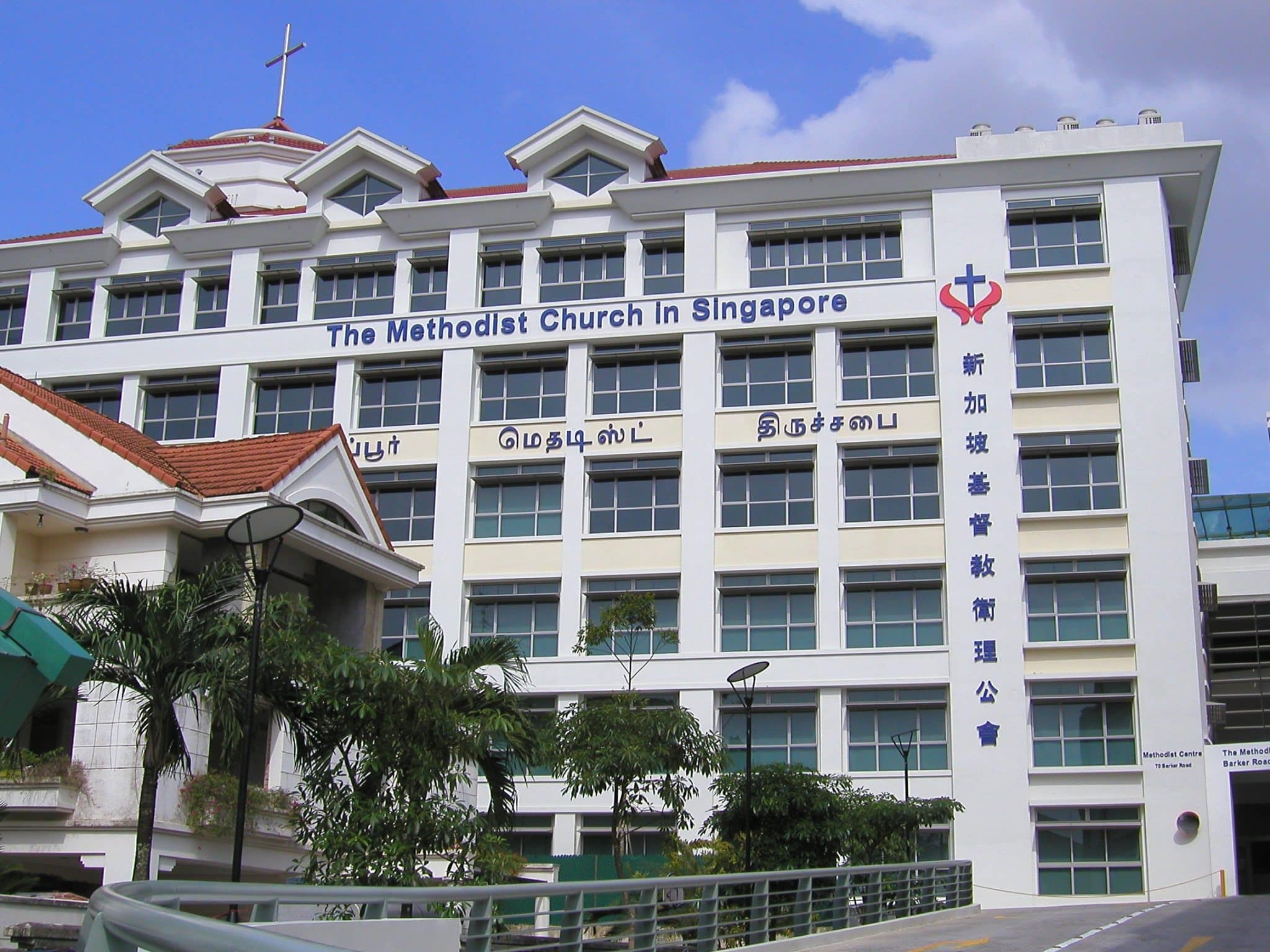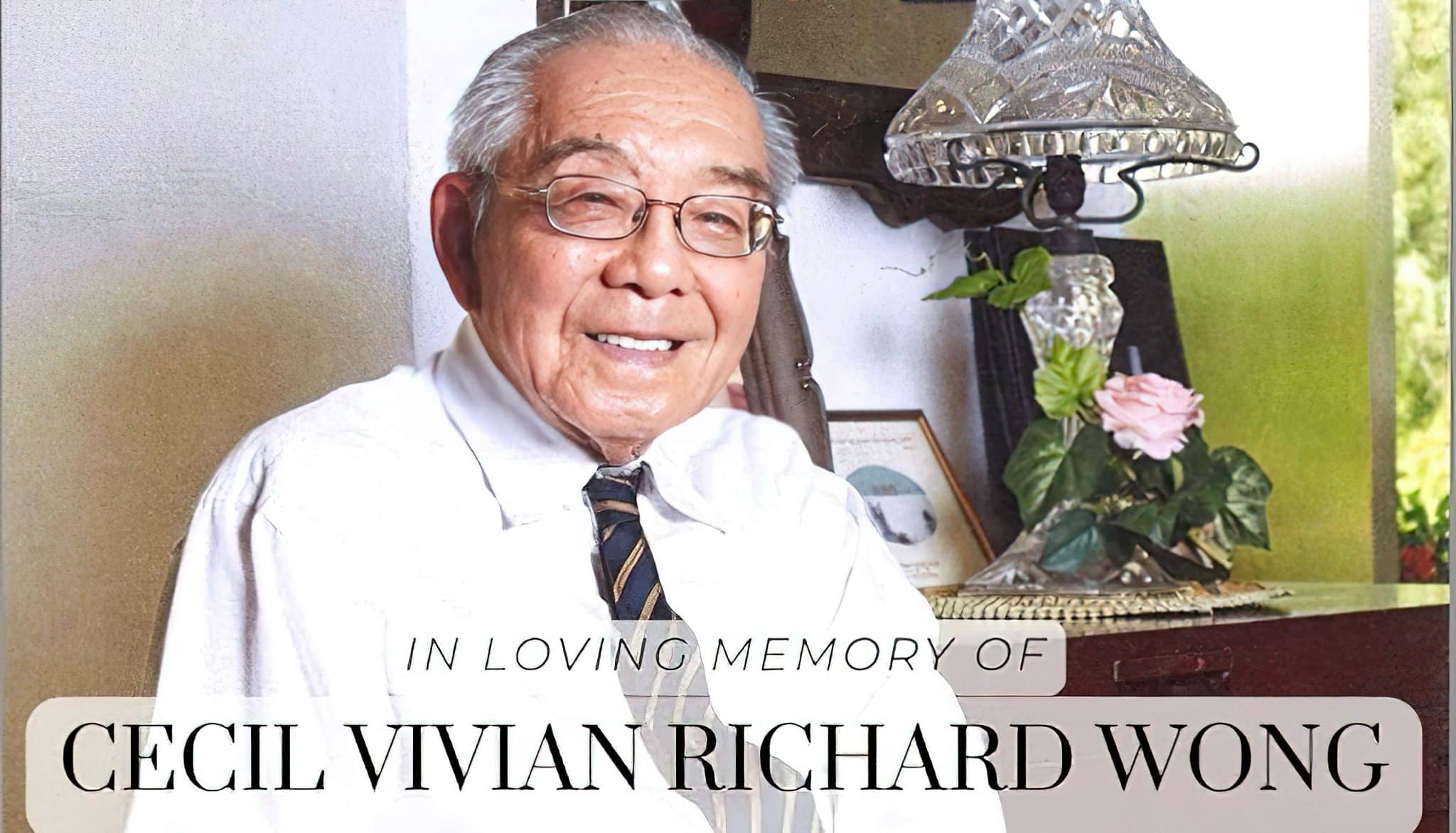From “tin hut church” to safe haven during WWII: Singapore’s oldest Chinese Methodist church celebrates 100th year of its church building
by Christine Leow // May 3, 2025, 1:00 pm
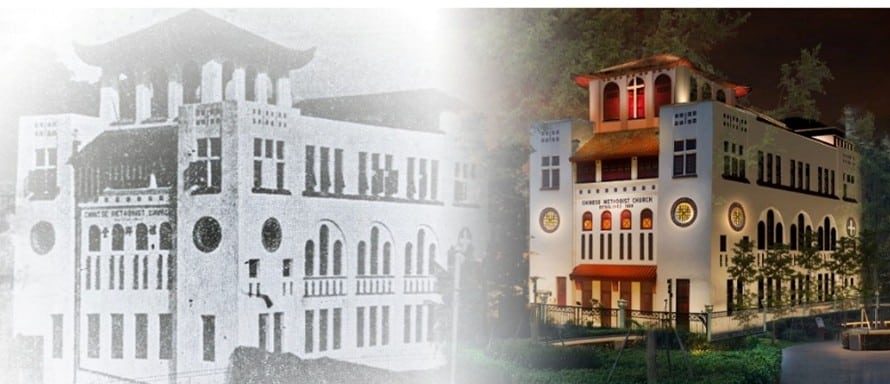
Telok Ayer Chinese Methodist Church is not merely of historical importance because it is the first Chinese Methodist Church in Singapore, it is also of architectural importance. It was gazetted a national monument in 1989 by the Urban Redevelopment Authority and awarded the Architectural Heritage Award in 1996. All photos courtesy of Telok Ayer Chinese Methodist Church.
At just four storeys high, the white building with a red pagoda roof is a stark contrast to the towering modern glass and steel structures in the Central Business District.
While Telok Ayer Chinese Methodist Church, or TA for short, may now be dwarfed by its neighbours, it remains a giant in the nation’s political and religious history.
TA, Singapore’s first Chinese Methodist church, began in 1889 as a dispensary in a shophouse on Upper Nankin Street. Out of that, American missionary and medical doctor Dr Benjamin West converted TA’s first members: 12 men and one woman.
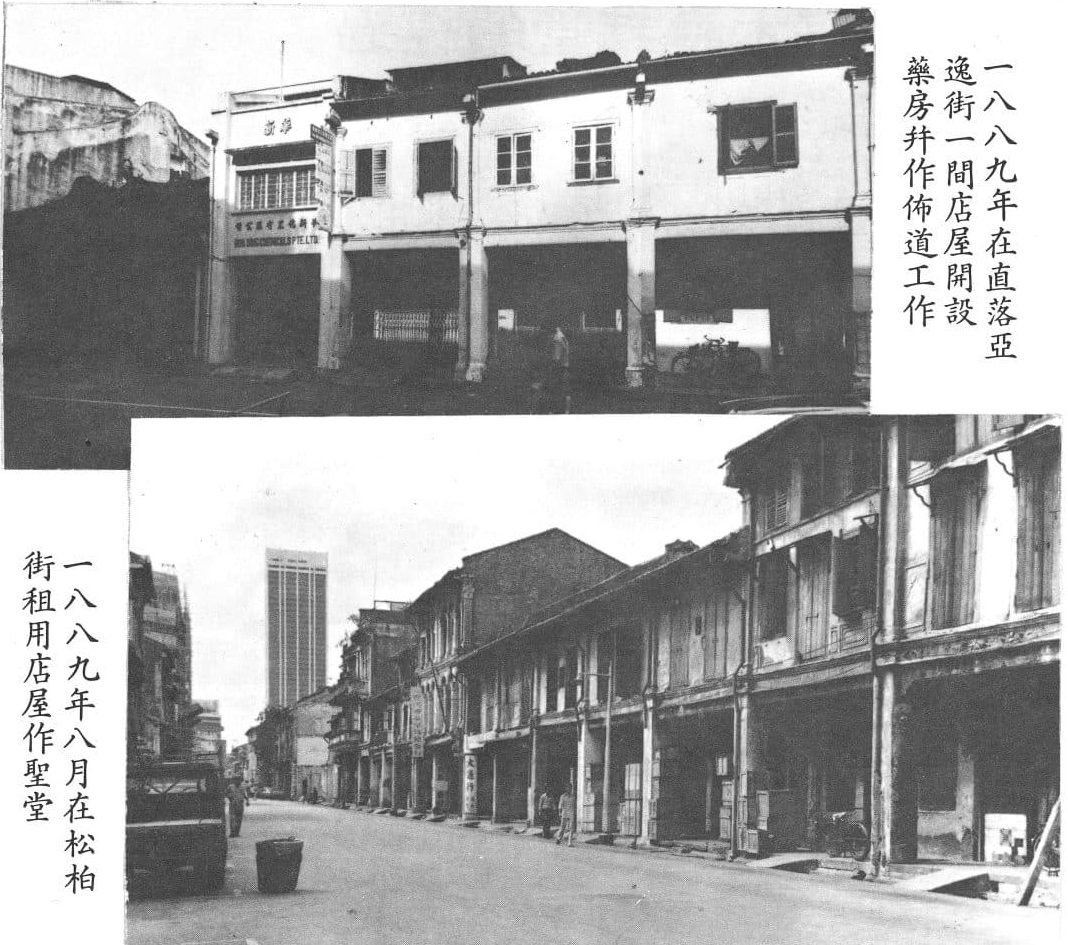
Telok Ayer Chinese Methodist Church (TA) started in a shophouse on Upper Nankin Street in 1889. The aim was to reach out to Hokkien-speaking immigrants who had come to Singapore from Fujian, China.
The church would move once before settling in its current location in 1913 at the junction of Telok Ayer Street and Cecil Street. On the empty plot of land, worship services were held, first in make-shift tents and then in a “tin hut church” of wooden planks and zinc pieces.
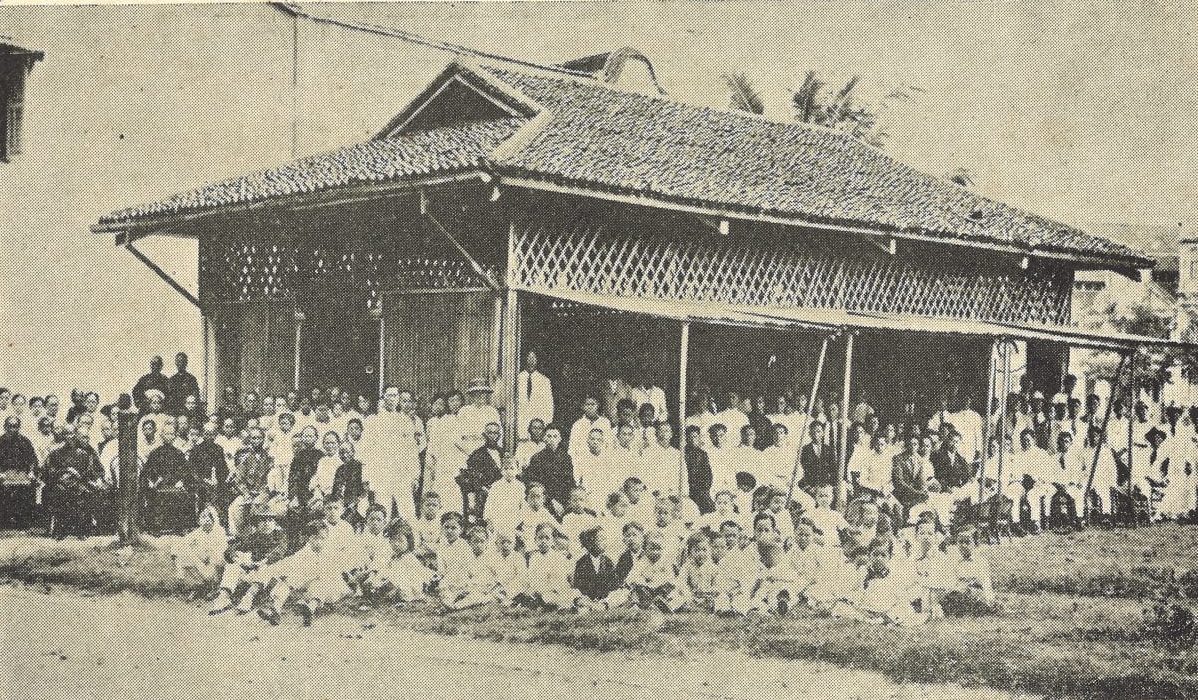
The “tin hut church” was the first building on the site where the current church now stands, at the junction of Telok Ayer Street and Cecil Street.
It was only in 1925 that the church building was finally built. The three-storey monument was designed by the same architectural firm – Swan & Maclaren – that built the Victoria Memorial Hall (now Victoria Theatre and Concert Hall).
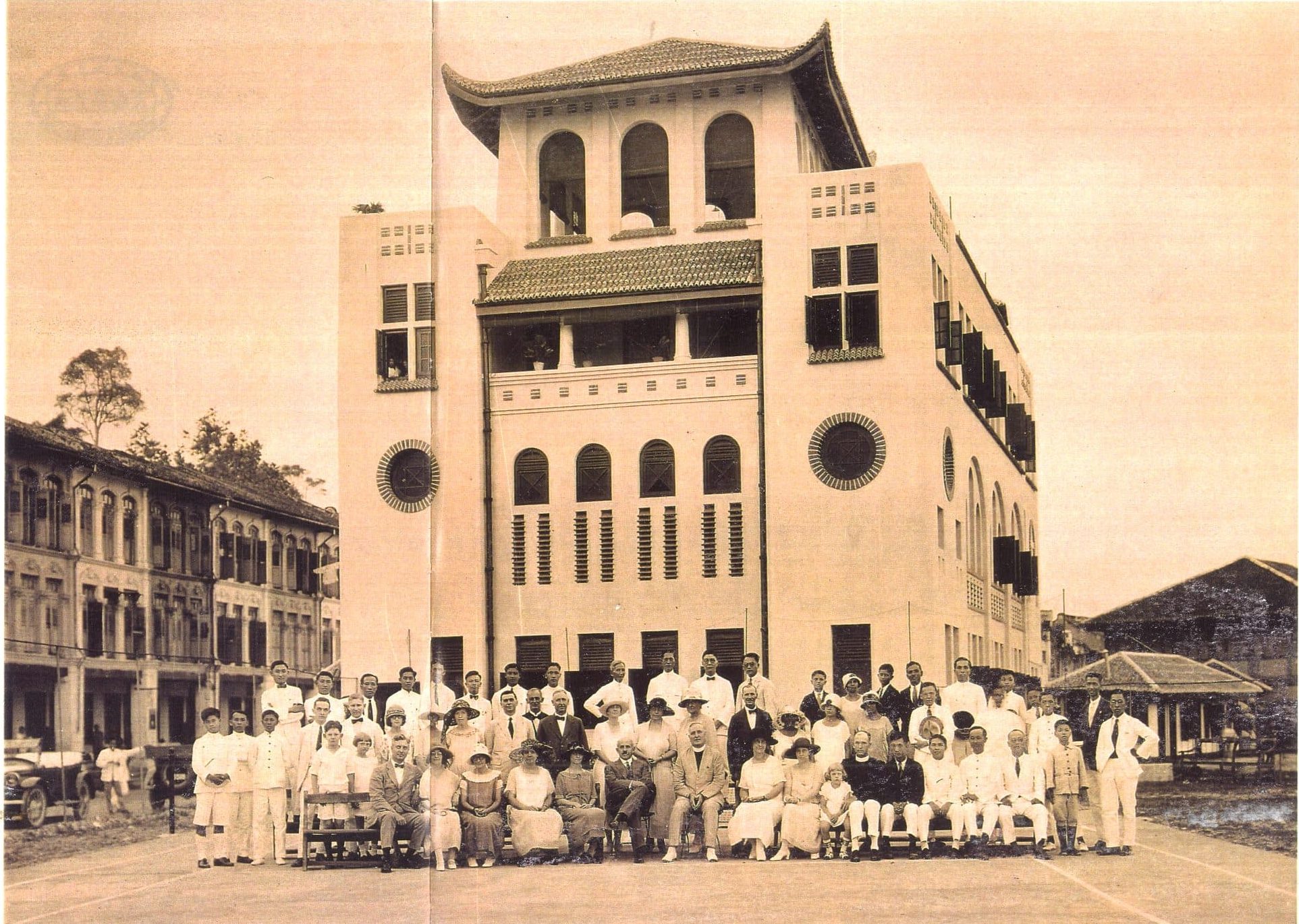
The new church building in 1925.
The grand old dame turns 100
On May 3, 2025, TA celebrated the 100th year of that building, rededicating it to God after nearly three years of restoration works.
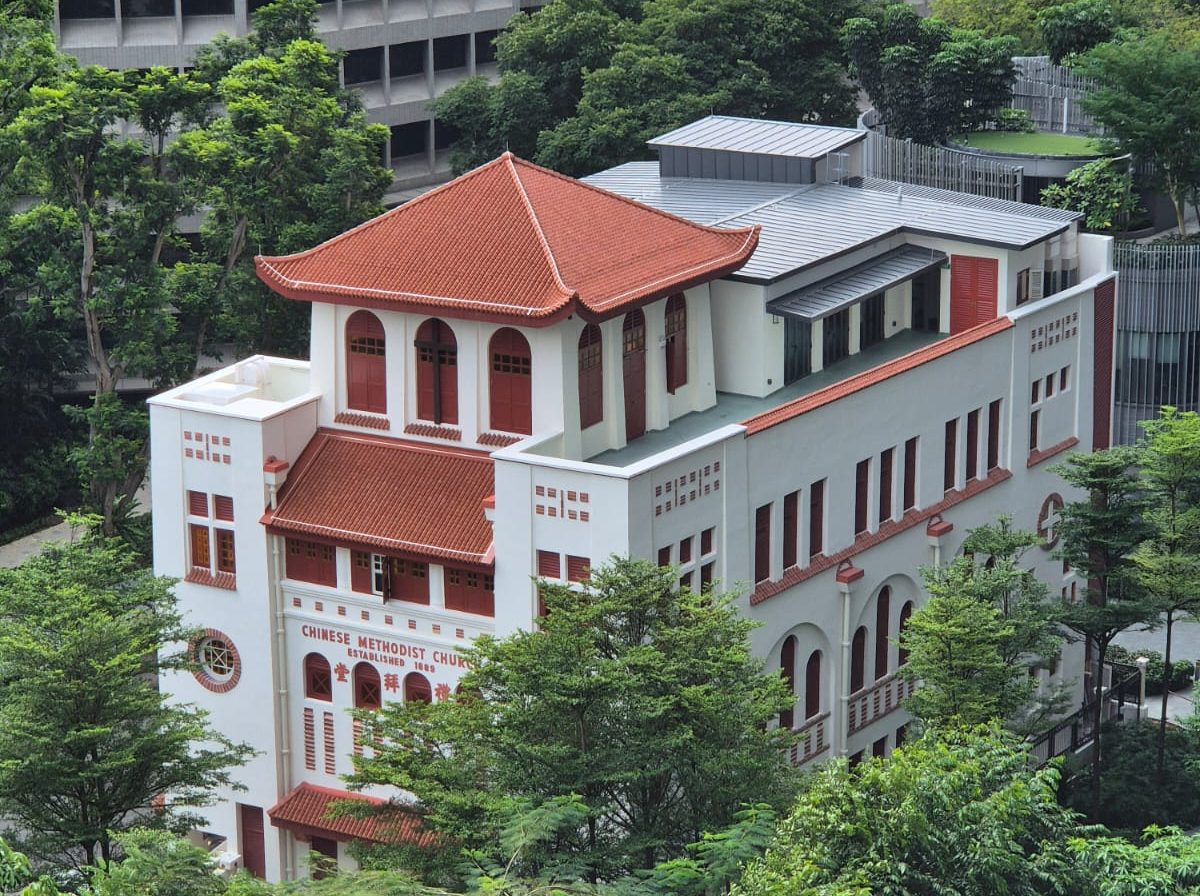
The church simply has the name “Chinese Methodist Church” on it because it was the only Chinese Methodist Church in Singapore when it was first erected.
“What began as an upgrading project in 2019 was abruptly halted by the COVID-19 pandemic in 2020. This delay proved to be God’s protection,” said Tan Hua Joo, Chairman of TA’s Local Church Executive Committee (LCEC). “Had we proceeded then, the project would have faced even greater complications due to lockdowns, and labour and material shortages.”
From the start, TA members shared the same motivation for its building – that it would do God’s name proud.
Of marking one century of the church building, Pastor-in-Charge Rev Edmund Koh said: “I feel very humbled and honoured to be witnessing this significant moment in TACMC’s history, and I am very glad that we could start and complete this long-planned restoration in time to celebrate the 100th anniversary of the church building.”
At the rededication service on the morning of May 3, Rev Philip Lim, Bishop of the Methodist Church in Singapore, preached from Nehemiah 2:12-20, reminding some 600 attendees: “While our Bible passage describes a physical building of the wall of Jerusalem, it is a metaphor for rebuilding our spiritual life.
“What is the motivation behind Nehemiah’s rebuilding project? It is found in Nehemiah 2:17. It says, ‘Then I said to them, ‘You see the trouble we are in: Jerusalem lies in ruin and its gates have been burned with fire. Come, let us rebuild the wall of Jerusalem, and we will no longer be in disgrace.’’”
From the start, TA members shared the same motivation for its building – that it would do God’s name proud.
A haven for the community
With a unique blend of Byzantine, Roman and traditional Chinese architectural elements, TA was designed to help the community of its day identify with it.
The louvred doors and windows are familiar features of Southeast Asian buildings. The five-foot way on its west side is distinctly Malayan. The pagoda roof speaks of its Chinese influence.
TA was not just the focal point of the local community. It served as a focal point of the spiritual community as well.
Instead of situating the main sanctuary on the ground floor, as was the practice of the time, the church’s entrance hall was transformed into a social space. There, activities were organised for migrants to build relationships and develop a sense of belonging in the community.
The ground floor was also where the Singapore Child Welfare Society set up its second centre in 1925 to provide support for mothers with babies in arms. Dr West added a reading room, refreshment bar, stage for entertainment, playground, and badminton and tennis courts to draw the community to the church.
TA was not just the focal point of the local community. It served as a focal point of the spiritual community as well.
In 1935, evangelist-revivalist Dr John Sung, whom many called the “Wesley of China”, came to Singapore. TA housed him and he spent much time in prayer at the church’s bell tower.
It was also in TA that he preached more than 40 messages over two weeks. Through the evangelistic revival meetings, over 1,300 people came to know Christ and 111 voluntary evangelistic teams were formed.
A sanctuary during wartime
Some 16 years later, TA would once again be a light to the community as the Japanese marched across Southeast Asia, claiming lands as their own.
The church’s bell tower became a watchtower for the British. From that vantage point, the British would spot enemy activities and forewarn the community.
Rev Hong also concealed British soldiers, hiding them in a secret cellar within the church.
During the Japanese Occupation, the then Pastor-in-Charge, Rev Hong Han Keng, turned the church building into a fortified sanctuary.
“In a courageous act of civil resistance, he reinforced the church’s corridor walls facing Telok Ayer Street to provide shelter against aerial bombings. Within the fortified building, more than 300 civilians found refuge during air raids,” said Prof Tan Chew Lim, TA’s former Church Archivist and now Advisor to the Church Archives Committee.
Rev Hong and his wife also offered food and medical attention to the people, he added.
At great risk to his safety and that of his family, who lived in the church with him throughout the war, Rev Hong also concealed British soldiers, hiding them in a secret cellar within the church.
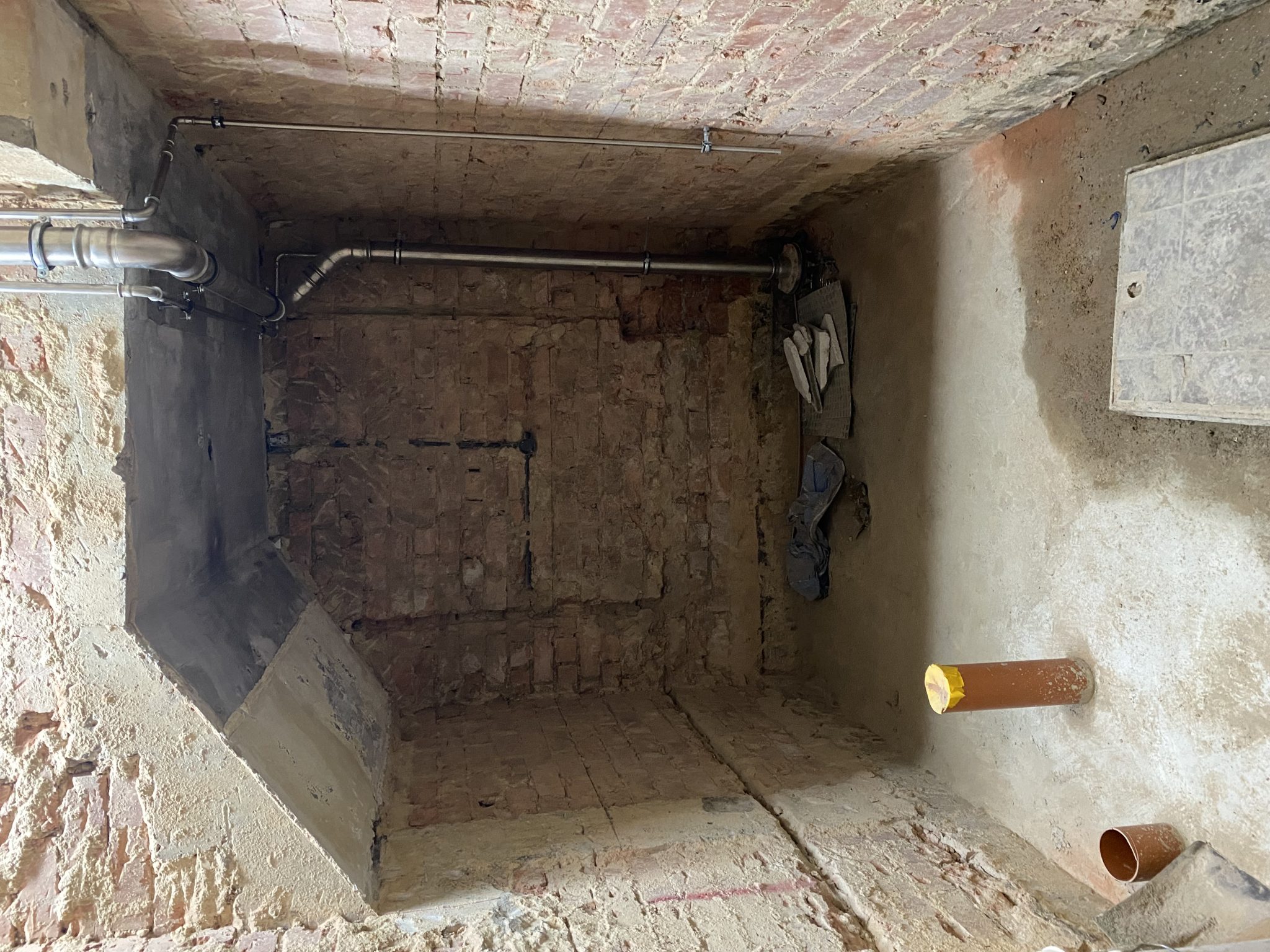
The secret cellar used to hide British soldiers from Japanese forces.
“His bravery and compassion saved lives, even under the threat of death,” said Prof Tan.
A source of spiritual strength
During the Occupation, the Japanese placed anti-aircraft guns on the roof of the church. They also regularly stormed the grounds at any hint of activities, for fear the Hongs harboured wireless communication sets that could be used against them.
Despite all this, Rev Hong remained steadfast in his support of the local community. In defiance of Japanese orders for all churches to cease their worship services, he continued to preach every Sunday, providing much needed spiritual solace.
Said Prof Tan: “His story is a reminder that faith, hope and love can shine even in the darkest of times.”
In recognition of his extraordinary service, Rev Hong was later honoured by the British government in an award presentation.
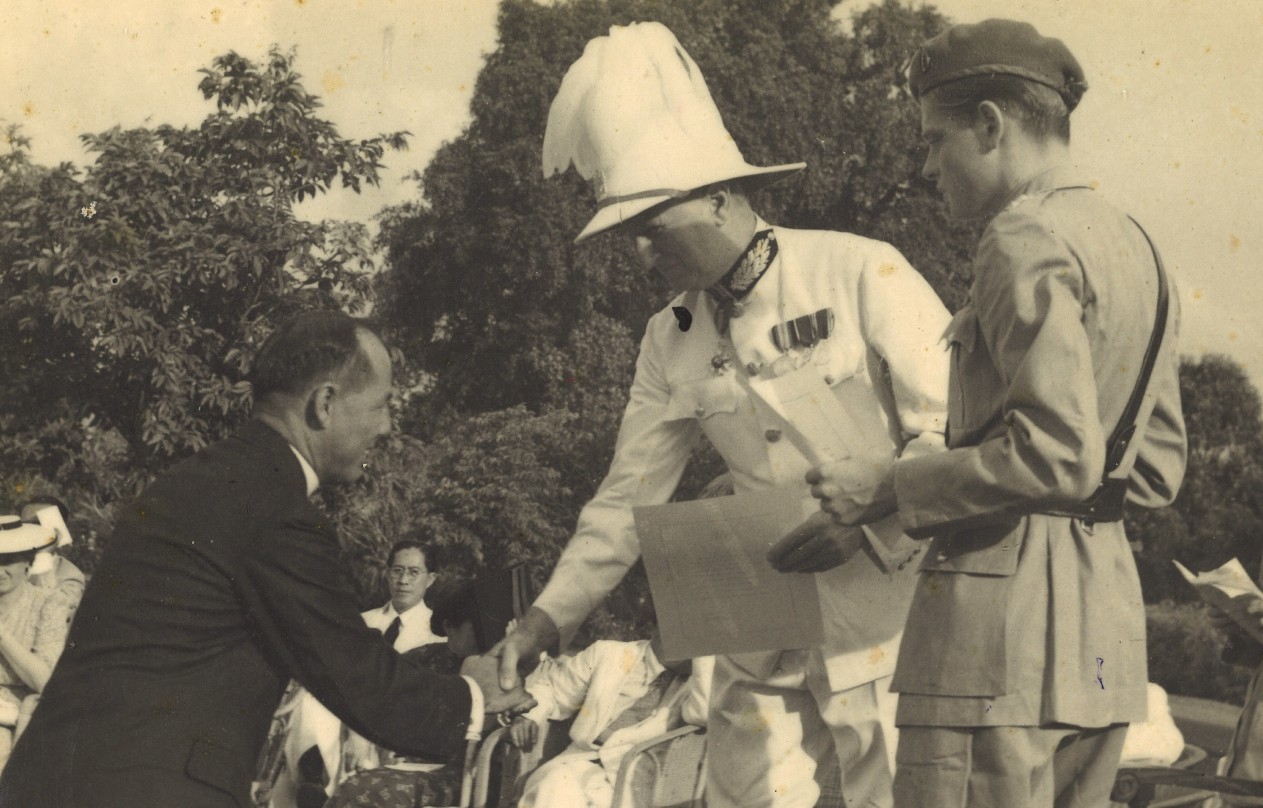
Then Pastor-in-Charge of TA Rev Hong Han Keng being honoured by the British for his service during the Japanese Occupation.
Carrying on its legacy
The refurbished TA building intends to live up to its legacy as a home and help to the community.
From August 1, its ground floor social hall will have a coffee bar and fellowship space. Named Oasis@TA, it will be where office workers can take shelter from the heat during their lunch and break times. There are also plans to organise social events, including mental well-being talks and tours of its heritage gallery.
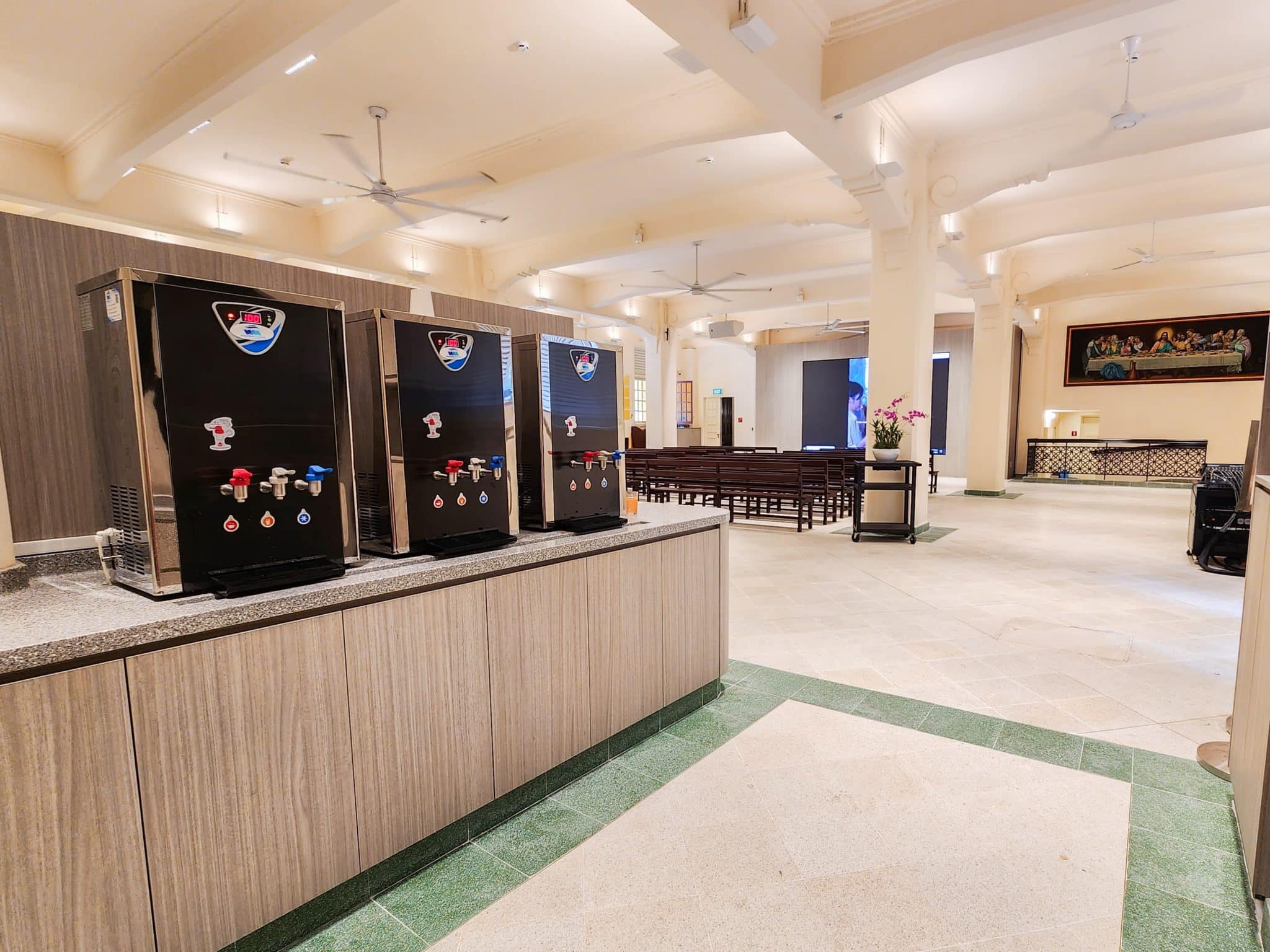
The coffee nook, Oasis@TA, that will offer the community respite from the heat.
Said Chair of Oasis@TA Khoo Fun Ming: “The Oasis@TA initiative is a beautiful continuation of the spirit that marked the very beginnings of TACMC. In the early days of the church, outreach took on practical and deeply compassionate forms – providing medical assistance and engaging the community through interactive games and social support.
“Oasis@TA carries forward that same heart of ministry. By opening the church as a warm and welcoming lunch space, TACMC continues to live out its calling as a place of refuge and care. It is this legacy of holistic love – body, mind and spirit – that binds the church’s past with its present mission.”
A message for the future
TA, which was gazetted a national monument in 1989 by the Urban Redevelopment Authority and awarded the Architectural Heritage Award in 1996, also wants to leave behind something else for its future members.
When the foundations of the church was laid in January 1924, a time capsule was buried under its foundation stone. Last year, a century from that event, the time capsule was unearthed.
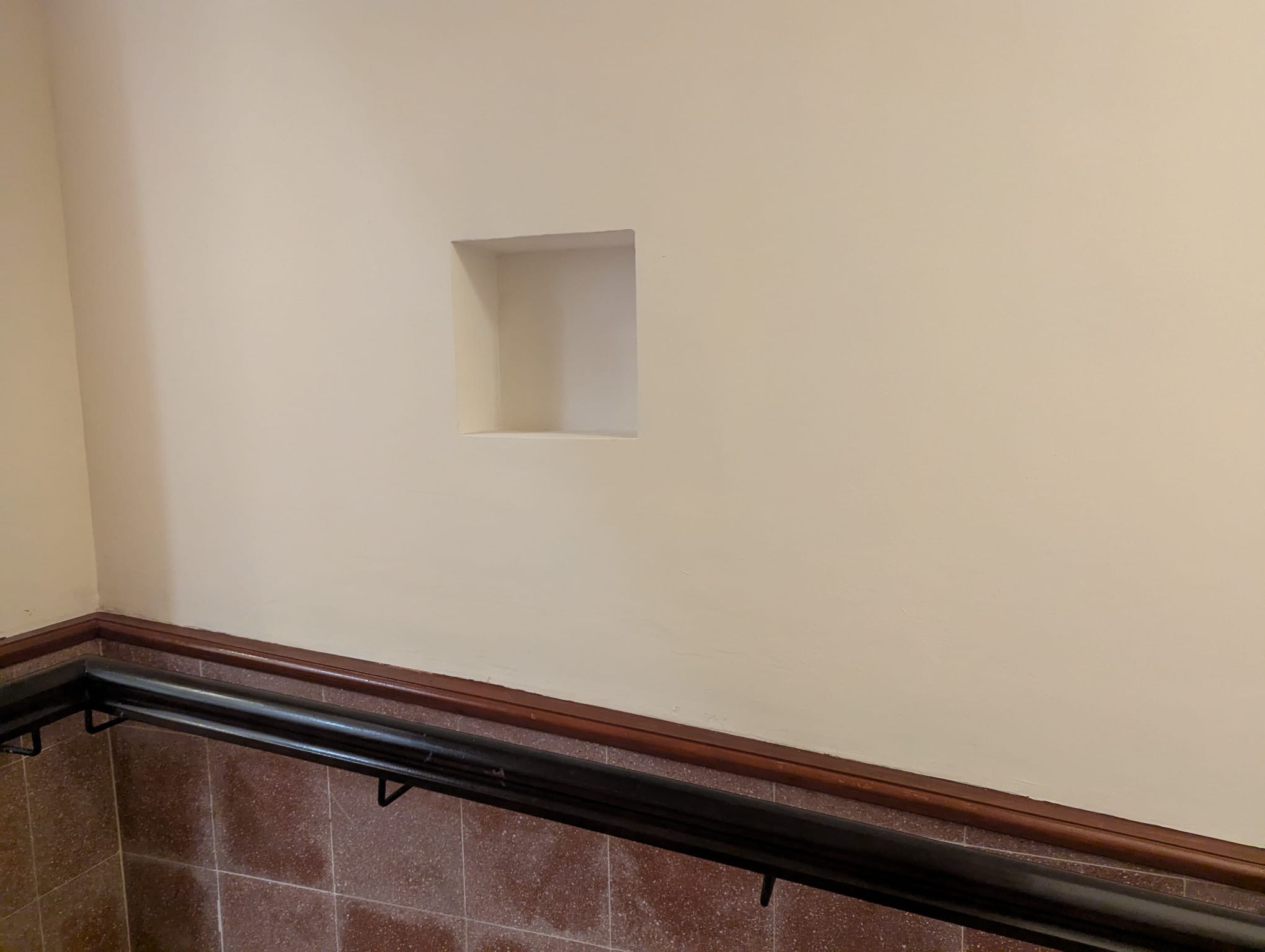
The space where the old time capsule was buried.
Said Rev Koh: “It was God’s leading and timing that led to the discovery of the time capsule last year. The time capsule gave us a keenly felt connection with our past, the saints who came before us. It was the faithfulness of generations that saw the faith being passed down and the church continuing to grow.”
“We pray that as you unearth these artefacts, your enduring legacy of faith transcends time.”
To mark the 100th year of TA’s church building, the church has installed another time capsule in the same place where the first time capsule was buried.
Said Goh Yat Tek, Chair of TA’s 100th year Anniversary Committee: “This allows us to capture the essence of our church at this present moment, preserving our faith and significance for future generations.
“It is not merely about locking away artefacts but about curating a snapshot of who we are, our missions, our identity today, to pass to the future generations.”
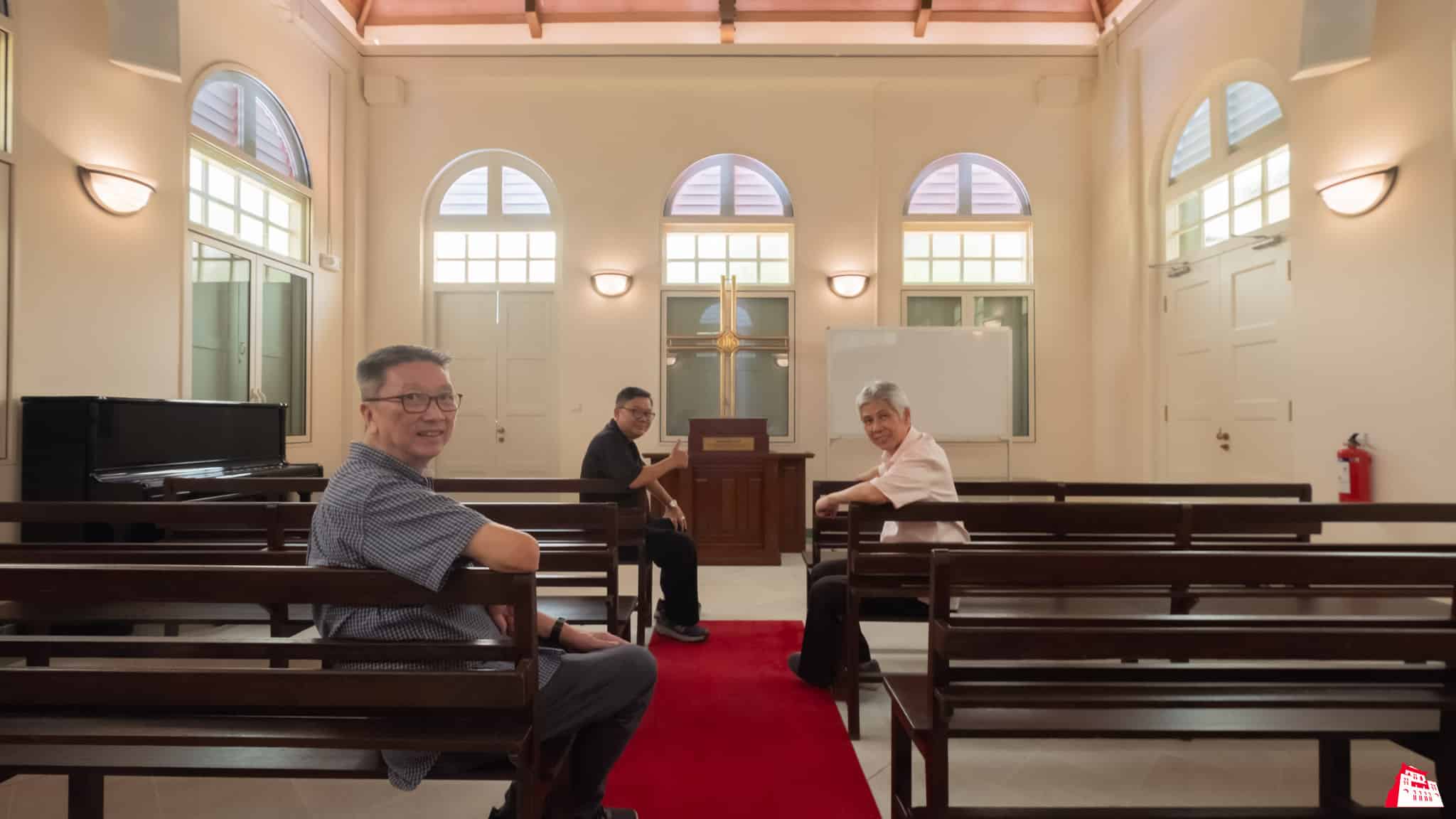
(Left to right) Goh Yat Tek, Chairman of TA’s 100th Building Anniversary Committee cum Vice-Chair of LCEC; Khoo Fun Ming, Steward and Chairman of Witness and Evangelism, and Chair of Oasis@TA; and William Toh, Chairman of TA Property Management Committee, were part of the team that laboured for three years to restore the church building.
Among the items buried, which include a bilingual Bible, the Methodist Book of Discipline and a Hokkien hymnal, is a letter from the church to its future congregants.
A particularly poignant part of the letter reads: “As we celebrate the completion of the centenary restoration of the church, we again entrust this gift of faith and mission to you, members, who will come a hundred years from now …
“We pray that as you unearth these artefacts, your enduring legacy of faith transcends time.”
RELATED STORIES:
We are an independent, non-profit organisation that relies on the generosity of our readers, such as yourself, to continue serving the kingdom. Every dollar donated goes directly back into our editorial coverage.
Would you consider partnering with us in our kingdom work by supporting us financially, either as a one-off donation, or a recurring pledge?
Support Salt&Light